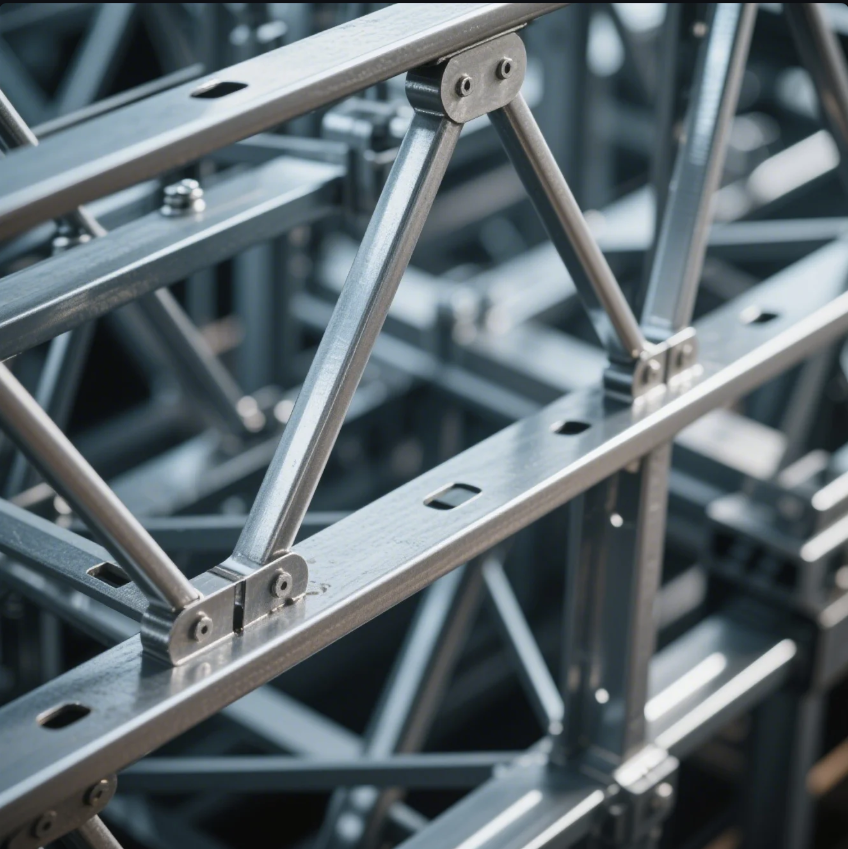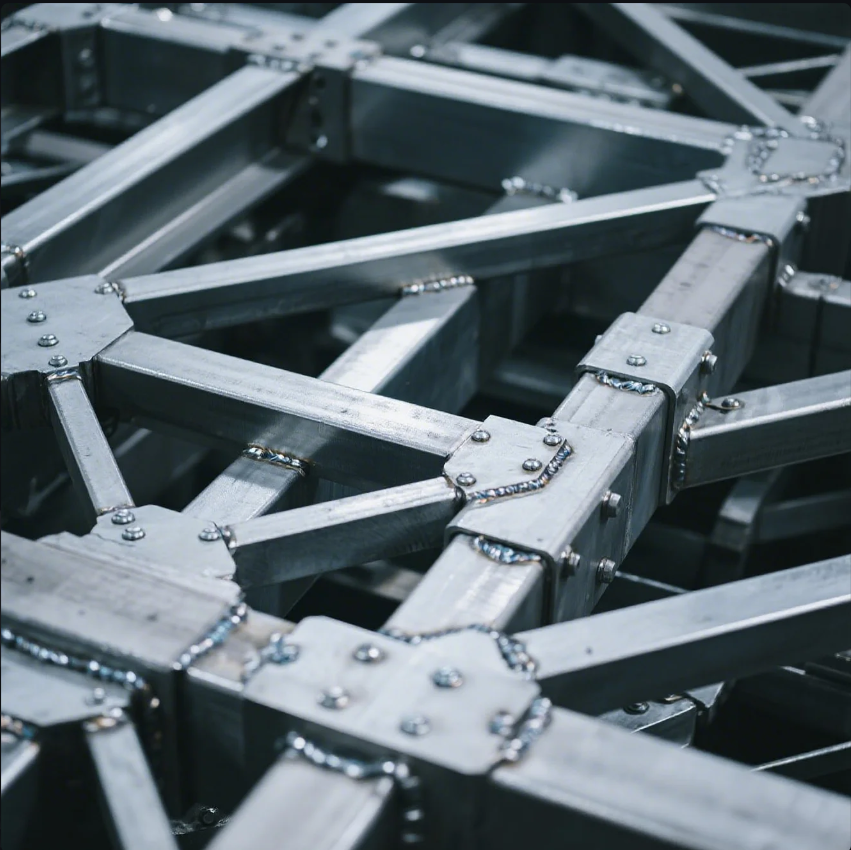TEMPLATE_START
What are the 4 Types of Structures?

Understanding the different types of structures is essential for various industries, from construction to business and economics. Structures serve as the foundation for creating stability, efficiency, and effective function. Whether you're referring to physical constructions, organizational designs, or market frameworks, knowing the distinct types of structures will help you navigate each context. In this article, we’ll explore the four main types of structures and their significance in different fields.
Snippet paragraph:
Structures come in many forms—physical, organizational, and market-related. Here, we’ll explore the four types of structures and how they apply to various systems.
Transition paragraph:
Let’s dive into the four key types of structures, examining their roles in construction, business, and economics.
What Are the Four Different Types of Structures?

In the context of construction and engineering, the four main types of structures are load-bearing, frame, shell, and composite structures. These structures distribute and manage the forces they encounter differently, providing unique benefits depending on the purpose of the building or system.
Snippet paragraph:
The four types of physical structures—load-bearing, frame, shell, and composite—offer various ways to manage load and ensure structural integrity.
Dive Deeper
-
Load-bearing Structures: These rely on walls or other vertical supports to bear the load of the structure. The walls themselves provide both support and enclosure. Historically common in smaller buildings and older homes, they’re still useful in certain contexts due to their simplicity.
-
Frame Structures: Frame structures use a skeleton of beams and columns to bear the weight of the building. The frame transfers the load to the foundation while allowing for flexibility in design. This is common in modern construction for buildings and bridges, providing strength while minimizing material usage.
-
Shell Structures: Shell structures distribute loads efficiently through their curved shape, minimizing material while maintaining strength. They are ideal for thin but strong buildings, such as domes or the hulls of ships and airplanes. The shape itself helps evenly distribute external forces.
-
Composite Structures: These combine elements from the other structural types to create a balanced solution. A composite structure might use concrete for the foundation, steel for the frame, and a shell for the roof, ensuring the best features of each material type are utilized.
Each of these structural types is chosen based on the specific requirements of the building or system, including cost, materials, space requirements, and expected stresses.
| Structure Type | Function | Example Applications |
|---|---|---|
| Load-bearing | Walls support weight directly | Small houses, Historical buildings |
| Frame | Beams and columns carry the load across spans | High-rise buildings, Bridges |
| Shell | Shape distributes load over a curved surface | Domes, Airplane fuselages |
| Composite | Combines multiple structures for balanced strength | Modern office buildings, Stadiums |
What Are the 4 Types of Organizational Structure?

In the business world, organizational structures determine how roles, responsibilities, and communication are handled within a company. The four main types of organizational structures are functional, divisional, matrix, and flat.
Snippet paragraph:
Organizational structures, such as functional, divisional, matrix, and flat, help define roles, enhance efficiency, and promote better communication within a company.
Dive Deeper
-
Functional Structure: The functional structure organizes employees based on their specialized roles or functions, such as marketing, finance, and operations. This structure works well in smaller organizations or industries with stable operations, as it promotes efficiency within departments.
-
Divisional Structure: The divisional structure splits the organization into separate divisions, each focused on a particular product line, service, or geographic location. This structure is ideal for large corporations with diverse product offerings or operations in multiple regions.
-
Matrix Structure: The matrix structure is a hybrid of the functional and divisional structures. Employees report to both a functional manager and a divisional manager, encouraging collaboration across departments and divisions. This structure can be complex but is beneficial for companies handling complex projects or multiple product lines.
-
Flat Structure: A flat structure has fewer hierarchical levels, encouraging employees to have more autonomy and decision-making power. It’s often used in startups and creative companies, fostering flexibility and faster decision-making.
Choosing the right organizational structure is critical for ensuring effective management, clear communication, and smooth operations.
| Organizational Structure | Function | Example |
|---|---|---|
| Functional | Organized by specialized departments | Small businesses, Stable industries |
| Divisional | Split into semi-autonomous divisions | Large multinational companies |
| Matrix | Combines functional and divisional structures | Tech companies, Project-based industries |
| Flat | Few management levels, promotes autonomy | Startups, Creative teams |
What Are the 4 Levels of Structure?

The four levels of structure can refer to different layers within an organization, biological system, or other system. In biology, these levels refer to the organization of life forms, from molecules to organs. In organizations, it refers to layers of decision-making and responsibilities.
Snippet paragraph:
The four levels of structure, including molecular, cellular, tissue, and organ, define how complex systems, like organisms or organizations, are organized.
Dive Deeper
-
Molecular Structure: The molecular level consists of atoms and molecules that form the foundation of biological life. At this level, chemical reactions occur, and essential molecules like proteins and DNA are formed.
-
Cellular Structure: Cells are the basic building blocks of all life forms. Each cell is an organized structure with various organelles, like the nucleus and mitochondria, each performing specific functions to sustain life.
-
Tissue Structure: Tissues are groups of similar cells working together to perform a specific function. Examples include muscle tissue, nerve tissue, and epithelial tissue, all contributing to the overall function of an organism.
-
Organ Structure: Organs are made up of tissues working together to perform complex tasks. The heart, brain, and lungs are examples of organs that carry out critical life functions, relying on the coordination of various tissue types.
These levels are crucial for understanding how systems function in both biological and organizational contexts.
| Level of Structure | Function | Example |
|---|---|---|
| Molecular | Basic chemical units of life | DNA, Proteins |
| Cellular | Cells perform essential life processes | Muscle cells, Nerve cells |
| Tissue | Groups of cells working together for a function | Muscle tissue, Epithelial tissue |
| Organ | Collection of tissues performing complex tasks | Heart, Brain, Lungs |
What Are the 4 Types of Market Structure?

In economics, market structure refers to the way a market is organized, based on the number of firms and the type of competition that exists. The four types of market structures are perfect competition, monopolistic competition, oligopoly, and monopoly.
Snippet paragraph:
The four market structures—perfect competition, monopolistic competition, oligopoly, and monopoly—define the nature of competition and pricing in various industries.
Dive Deeper
-
Perfect Competition: In a perfectly competitive market, there are many sellers offering identical products. No single seller can influence the price, which is determined by supply and demand. Examples include agricultural markets for products like wheat and corn.
-
Monopolistic Competition: In monopolistic competition, many companies offer similar but differentiated products. Businesses compete on quality, price, and branding. Examples include the restaurant industry or retail clothing markets.
-
Oligopoly: An oligopoly is a market dominated by a few large firms, each with significant control over pricing and market share. Examples include the automobile or airline industries, where a few companies control most of the market.
-
Monopoly: A monopoly exists when a single company controls the entire market for a product or service, often eliminating competition. Utility companies like electricity or water are common examples of monopolies.
Understanding market structure is crucial for businesses, as it influences pricing, competition, and market strategies.
| Market Structure | Characteristics | Example |
|---|---|---|
| Perfect Competition | Many firms, identical products, no price control | Agricultural markets |
| Monopolistic Competition | Many firms, differentiated products | Restaurants, Retail |
| Oligopoly | Few firms dominate the market | Automobile industry |
| Monopoly | One firm controls the entire market | Utility companies |
Conclusion
In conclusion, understanding the different types of structures—whether physical, organizational, or market-related—is vital for navigating construction, business operations, and economics. Each type of structure serves a specific function, ensuring efficiency, stability, and sustainability. Whether designing a building or managing a business, selecting the appropriate structure can make all the difference in success.
TEMPLATE_END







